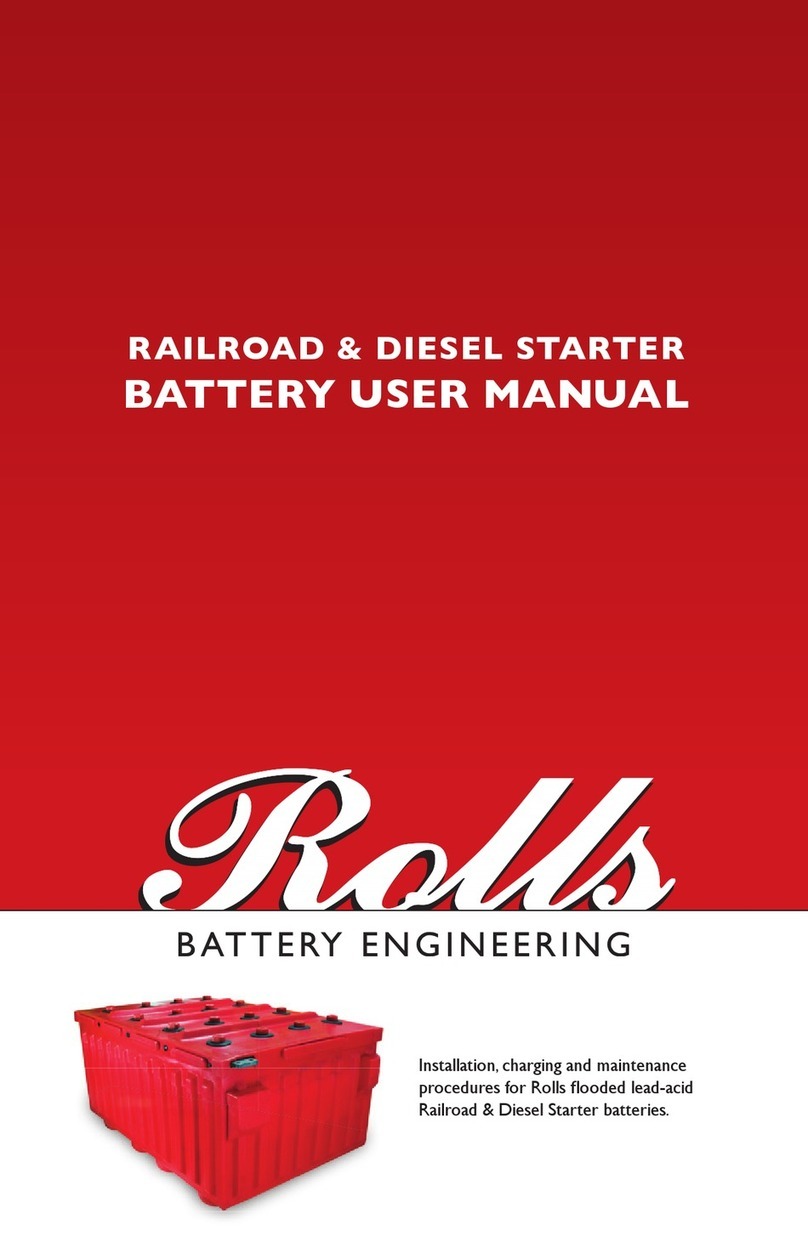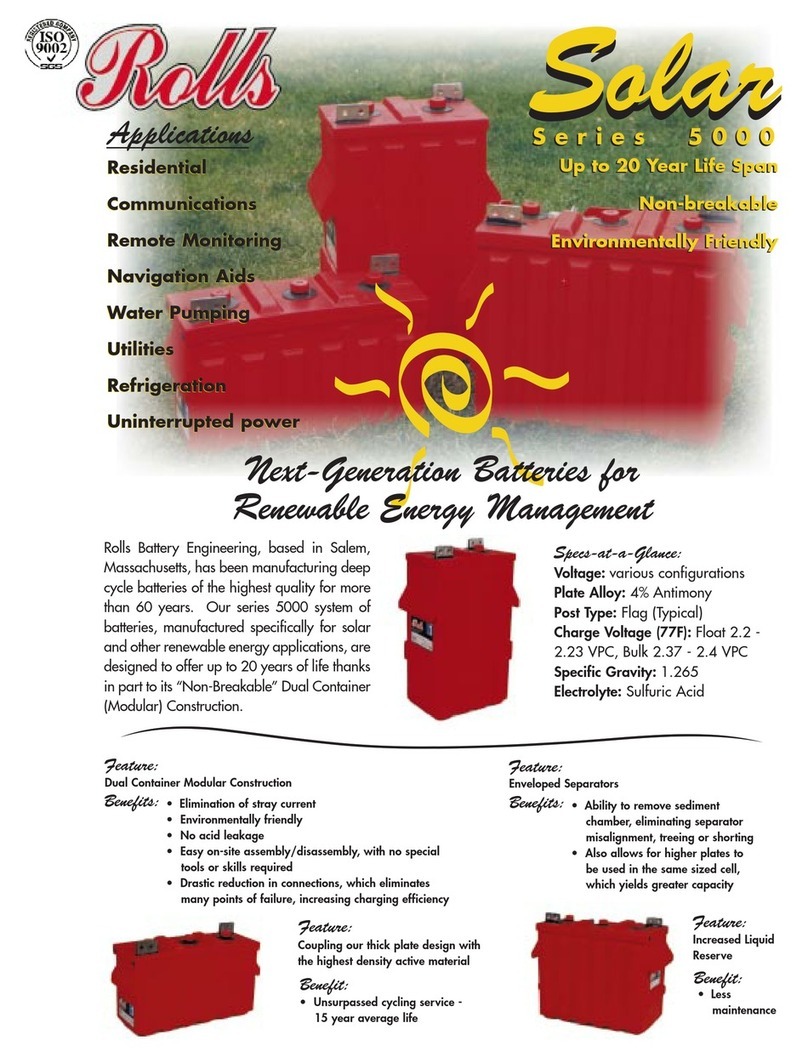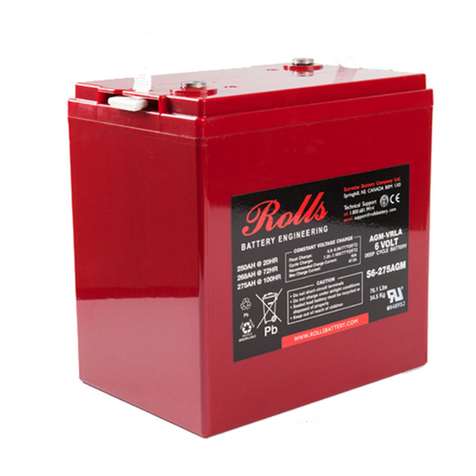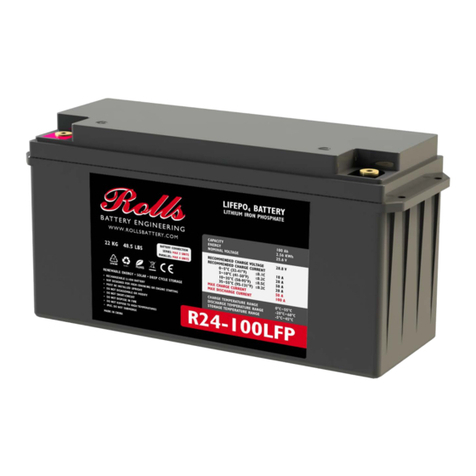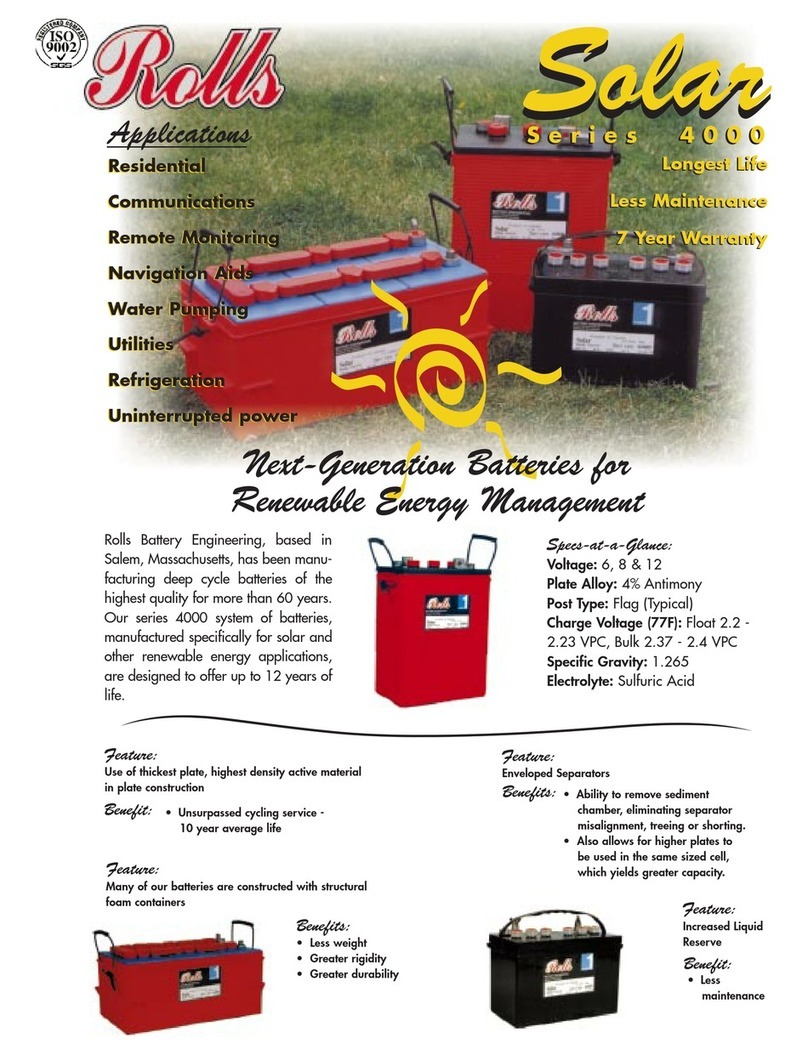MANUAL
Rolls Battery has been manufacturing deep cycle lead-acid batteries since 1935.
Experience gained has helped us achieve an unmatched reputation along with specific
measures to obtain the maximum performance and life from our product. This manual
describes the recommended charging, equalization and preventive maintenance
procedures for Rolls batteries in order to maximize battery life.
EqUipMENT NEEdEd
· Goggles, rubber gloves and rubber boots
· Distilled water
· Baking soda
· Voltmeter
· Hydrometer
· Battery charger
SAfE HANdLiNg pRoCEdURE
Always wear acid-resistant clothing, PVC gloves, goggles and rubber boots – especially
where there is risk of splashing. Always keep the batteries in an upright position. Always
have plenty of water available in case of acid spillage.
iNSpECTioN
Upon arrival, check the battery for visible damage (i.e. cracks, dents, deformation
and other visible abnormalities). Verify connections, assure that they are clean. If
the battery is dirty, or if any minor amount of acid has spilled onto the case, check
cleaning section of this manual. Any fluid on or around the battery could indicate
damage or improperly sealed case. Please verify the polarity of the terminals.
In the event of leak or damage please contact your retailer or Rolls Battery Company
Limited to determine if the battery needs replacement.
iNSTALLATioN
Rolls offers batteries for a wide variety of applications. No matter the application,
always be certain that the battery is properly secured, free of contaminants and that all
connections are in good contact with the terminals. Contact your retailer or refer to Rolls
Battery Technical Support.
BATTERY ORIENTATION
Flooded lead acid batteries must be kept in an upright position at all times. Electrolyte in
the battery will spill if tilted.
CABLE SIZING
The size of the cables used should be proportionate to the amount of amperage in your
system. See Table 1 for maximum current carrying capacity based on cable gauge.
2











